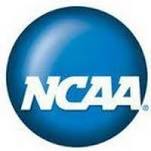Twenty four former college football and basketball players brought suit against the NCAA. Twenty of this group asserted in their complaint that the NCAA violated federal antitrust law by restraining competition for their names, images, and licenses with Electronic Arts (EA) and the Collegiate Licensing Company (CLC).
This case revolves around the right of publicity, the right of a person to prevent unauthorized use of that person’s name, likeness, or other recognizable aspects of them and gives them the exclusive right to license the use of their identity for commercial purposes.
In this case, the district court of the Northern District of California addressed whether the NCAA, in concert with EA and CLC, unfairly restricted the competitive market for these images of the plaintiff student athletes under federal antitrust law.
To show that someone has put a restraint on commerce that violates the Sherman Antitrust Act, the plaintiff has to establish that:
- There was a contract, combination, or conspiracy;
- This agreement unreasonably restrained trade in a way that was more harmful to competition than beneficial; and
- The agreement affected interstate commerce
In this case, the players challenged the NCAA’s restriction not allowing them to sell group licenses to their names, images, and likenesses. The former players argued that the NCAA’s restriction affected two markets: the market for college education and the market for group licensing. The court determined that the plaintiffs had established enough evidence to support their claims because the NCAA had continued to use their images long after they had left collegiate sports.
The NCAA argued that there were five pro-competitive justifications for their restrictions:
- Preservation of amateurism in college sports
- Promotion of competitive balance among college teams
- Integration of education and athletics
- Increased support for women’s sports and less prominent men’s sports
- Greater output of college football and basketball
The plaintiffs requested summary judgment in their favor. To grant summary judgment, all possible favorable interpretations of fact for the party against whom summary judgment is requested must be judged to not create any issues of fact. Essentially, even if all the evidence is considered in their favor as far as possible using reasonable inferences, their claim does not hold up. Here, the court determined that the NCAA cannot use their fourth justification (increased support) and granted summary judgment on the issue for the plaintiffs.
The case will now proceed to trial on the issue of damages for each of the plaintiffs. The plaintiffs will have to show some continuing action since 2005 by the NCAA that restricted trade to establish their damages, which the court in this case seemed confident they would be able to do.
This case is important in the arena of college sports because it raises significant issues about the NCAA’s restrictions of students’ rights to self-market and profit off their own names, images, and likenesses. Should the plaintiffs prevail on this antitrust basis, it could be an important step toward change in college sports.









